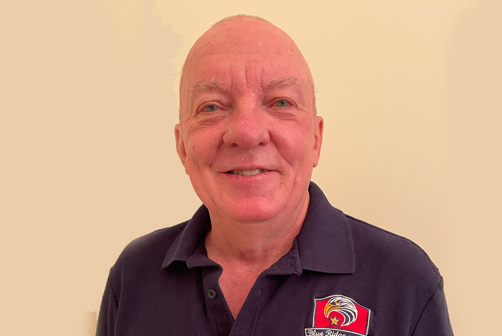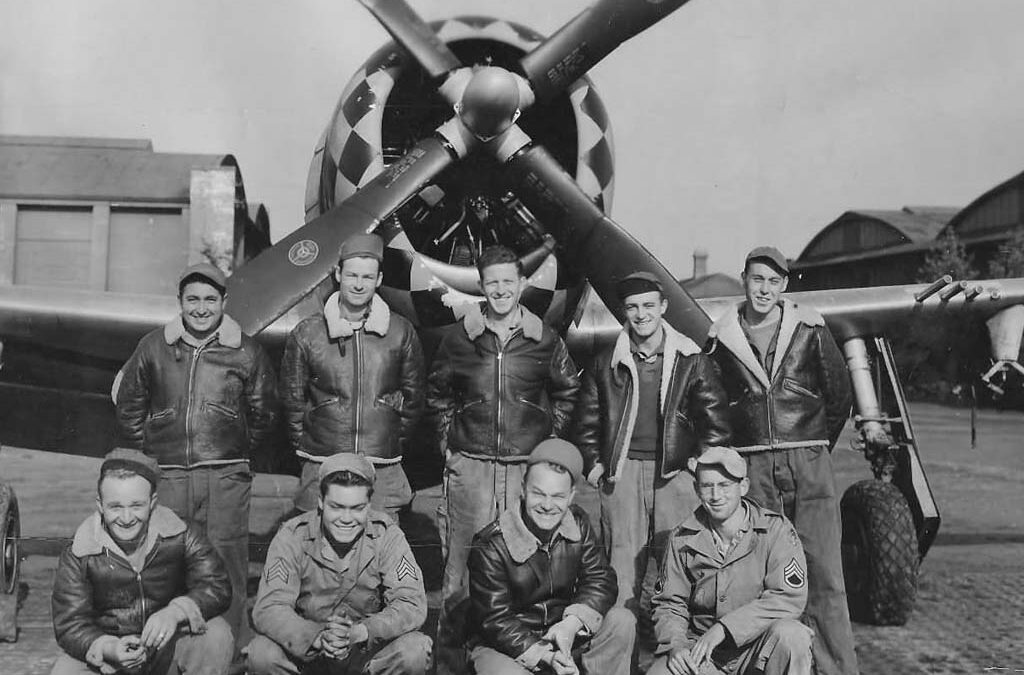On Thursday, September 8, at 2:00 p.m., Lt. Col. Bob Wilkerson, U.S. Air Force (Ret.), pictured here in his Blue Ridge Honor Flight shirt, will present the free program “Winning the European Skies of WWII.” The presentation will be held at the Transylvania County Election Center, 150 South Gaston Street in Brevard. In a 29-year Air Force career, including service in the Texas Air National Guard, Wilkerson piloted four generations of U.S. fighters plus many other types of military aircraft. He also flew as a commercial airline pilot for 21 years. From an early age, he was drawn to flying, and he was especially influenced by the history of American air power in WWII.

Wilkerson’s will present highlights of the premier American fighter aircraft of the WWII European theater – the P-38 Lightning, the P-47 Thunderbolt, and the P-51 Mustang. He will also share vignettes of the colorful fighter pilots who flew them.
The combination of these “winning aircraft and winning pilots” played a pivotal role in winning the skies of WWII Europe for the Allied cause.
As will be explained in depth by Wilkerson, the P-38, P-47, and P-51 collectively won control of the skies over Europe and enabled the ultimate destruction of Nazi Germany:
- The “fork-tailed devil,” as the P-38 was known by its Luftwaffe adversaries, was an airplane ahead-of-its-time, being designed by the Lockheed “Skunkworks” in the late 1930s. The P-38 protected U.S. heavy-bomber missions over Germany, served as a fighter-bomber during and after D-Day, and took more aerial reconnaissance photos than any other plane in WWII.
- The heavily-armed, eight-ton P-47, known as the “Jug” by friends and foes, was powered by a huge 18-cylinder Pratt & Whitney R-2800 radial engine, making it the Army Air Force’s primary, most powerful fighter-bomber early in WWII. The P-47 was effective both in dog fights and in strafing missions against German ground forces. Ed Cottrell, an Army Air Force veteran living in Hendersonville who is currently 100 years old, piloted a P-47 during the Battle of the Bulge in December 1944.
- The P-51 was a high-performance, high-altitude fighter with the range and reliability to escort Allied bombers all the way from England to Germany and back. Due to the P-51, the Army Air Force achieved air superiority over Germany by the summer of 1944. By late 1944, the P-51 eliminated the Luftwaffe as an effective fighting force. Commented Nazi Reichsmarschall Hermann Goring: “When I saw Mustangs over Berlin, I knew the jig was up.”

Images of the P-38, P-47, and P-51. – Courtesy R. Wilkerson
Wilkerson, a native of Texas, received his B.A. degree from Texas A&M University and his M.B.A. from the University of Houston. His long and varied career saw him playing significant, often concurrent, roles with the U.S. Air Force, the Texas Air National Guard, Continental Airlines, and the multinational bank Société Générale. He retired to Brevard with his wife, Elaine, eight years ago.
This program is offered by the Veterans History Museum of the Carolinas as part of our history series of guest speakers. We invite you to join us for this free program, which will also be livestreamed on Facebook beginning at 2:05 PM EDT on September 8. The recorded program will also be available later on the museum’s website.
For more information, please call 828-884-2141.
Article By Gregory Ehr


My uncle was a p38 pilot. He was shot down over Germany but escaped 3 days later. I have photos and his typed story.
Hello Bonnie,
Thank you for getting in touch! I’m the communications director for the museum, and would love to publish your uncle’s story here and in our e-newsletter.
Please send it to janisallen@janisallen.com.
I look forward to communicating with you.
Janis Allen
Hi Bonnie,
I’m the communications director for the museum, and would love to have your uncle’s story. Please email it to me at janisallen@janisallen.com. My thanks!
Janis
I could not attend the presentation by Bob Wilkerson on Sept. 8th, and would like to know if a video of his discussion is available on this site.
Thank you.
Hello Walter Cerny. Thank you for your interest. We’re working to get the video posted. Please check back. I’m sorry for the delay.
Janis Allen
Communications Director